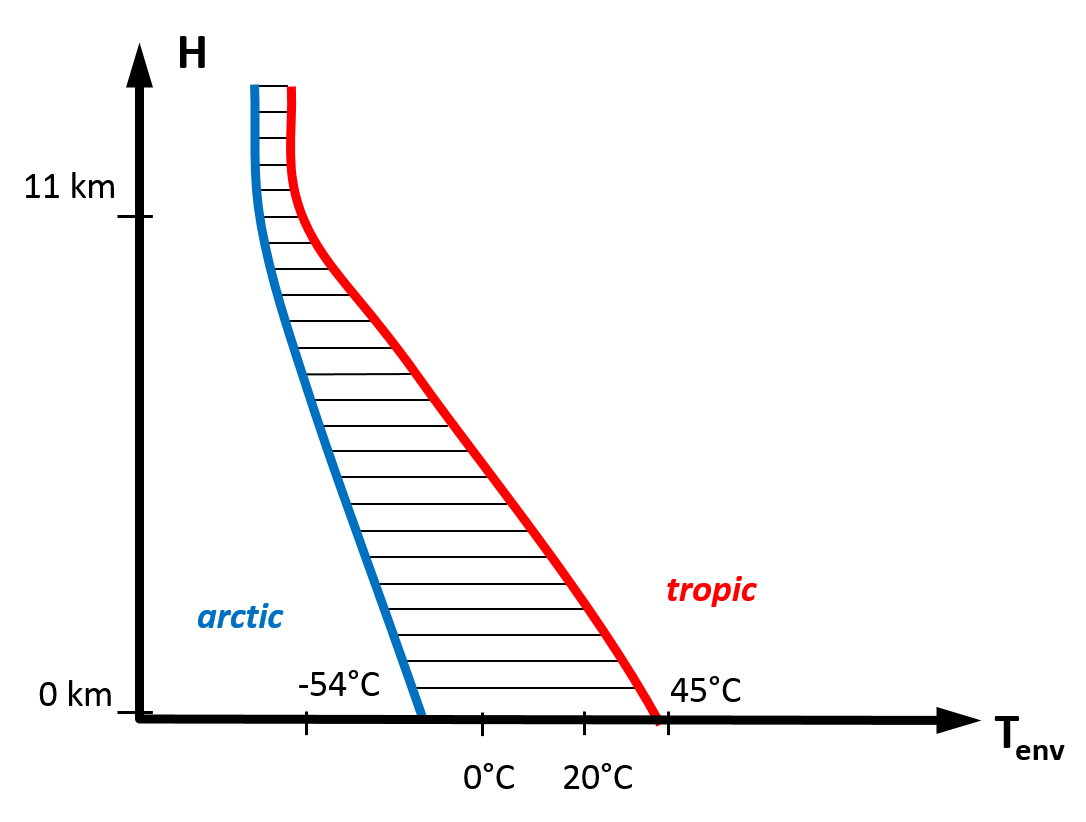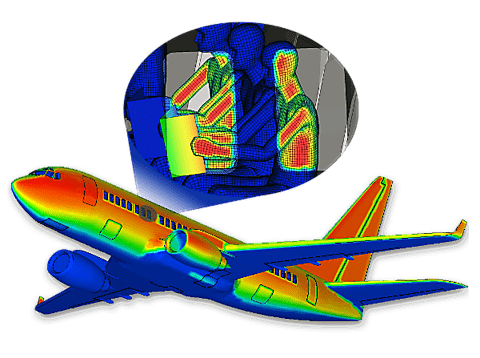Environmental Control Systems (ECS) in aircrafts

The main task of the environmental control system (ECS) of an aircraft is to provide air supply, thermal control and cabin pressurization for the crew and passagers. An amount of 0.55 lb/min of fresh air has to be supplied for each passenger within the following bounds:
- proper level of oxygen
- a moisture level of 7-15 %
- temperature in the range 21-25 °C
- a pressure level of approx. 750 hPa
The desired cabin pressure is regulated by controlled draining of stale air. Recirculation air and fresh air are mixed in roughly equal proportions.
For the normal flight operation, cabin temperature is regulated to 21-25 °C For cooling down an airplane while on the ground on a hot sunny day, one estimates the necessary cooling power to about 150-200 W per passenger. For a large capacity aircraft with 350 passengers this leads to a required cooling capacity of over 50 kW.
When putting the ECS system into operation, its efficiency is demonstrated with dynamic load cases
- typical summer load case: cooling down from 40 ° to 24 °C
- typical winter load case: heating up from -25 °C to 21 °C
The cabin target temperature has to be reached within 30 minutes.
The process of heating up during the winter load case demands for up to 70°C fresh air temperature.
The portion of needed fuel for the environmental control system compared to the total fuel consumption is approximately 5%.
For the summer load case while on the ground, about 25% of the ECS power is used for dehumidification of the air.
Nowadays for that purpose high-pressure water separators are used.
They utilize that fact that air at high pressure absorbs less water than at normal pressure levels.

Thermal Comfort in aircraft cabins

At any time within an aircraft cabin a suitable temperature has to be set. This depends for example on the typical clothing of the passengers, e.g. is it summer or winter. Furthermore it can depend on the activity level of the passengers - are they awake or sleeping.
Reasons for local discomfort can be:
- intense air flow in the head or neck region
- cold feet
- incident solar radiation at the window seats
- sweating due to contact with the seat, especially on longer flights
When designing the cabin ventilation system, in general asymmetric and inhomogeneous thermal conditions should be avoided. To compare local comfort indices of passengers, it is appropriate to do thermal simulations using the thermophysiological human model of THESEUS‑FE coupled with fine-grained CFD simulations. Different variants of climatization concepts can be analyzed easily this way without the need for cost-intensive prototypes.

Related publications available as free download
Examples of industrially relevant turbulent flow simulation with OpenFOAM
[english, 10.5 MB]
M. Konstantinov, K. Weinman, W. P. Wu, T. Köthe, M. Fragner, R. Deiterding, C. Wagner
DLR Göttingen
Project Report | October 09, 2013
Numerical Simulation of the Air Flow and Thermal Comfort in Aircraft Cabins
[english, 0.3 MB]
M. Konstantinov, W. Lautenschlager, A. Shishkin, C. Wagner
DLR Göttingen
2014




